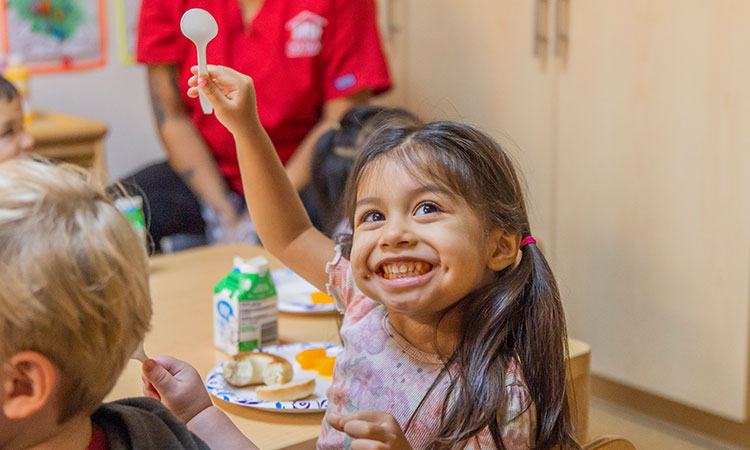Serving meals and snacks in a child care program is an important part of any day. When serving food, there are many safety considerations. Thanks to the Arizona Early Childhood Nutrition team (ECN), funded by First Things First, there is a new tool that child care providers can use to learn best practices for becoming a safe feeding expert. The ECN team is a collaboration between First Things First, AZ Health Zone, the Arizona Department of Education, Empower and the Arizona Department of Health Services. Their goal is to tackle food insecurity for families with young children.
Safe feeding practices are everyone’s responsibility. You can be a safe feeding expert!
What is a safe feeding expert?
A caregiver who uses best practices when planning, preparing, serving and feeding food to children, including:
- Staying close to children to see and hear them when food is served.
- Meeting the individual feeding needs of children.
- Preventing choking and knowing the signs of food allergies.
What are safe feeding practices?
Planning, preparing and presenting food requires safe feeding experts to be aware of the developmental and environmental needs of children in your care. This tool will help identify the key factors you and your staff can use to ensure that meal times are fun and safe!
- When planning:
- Review individualized feeding plans.
- Create a menu based on children’s needs:
- Allergies, sensitivities, intolerances and preferences
- Developmentally appropriate foods
- Choking hazards
- When preparing:
- Consider the age of the children being served.
- Ensure food is cut to an appropriate size, depending on the child’s age. Avoid shapes that are choking hazards. Round, rubbery, slippery, spongy, sticky or tapered items can be considered hazardous. Avoid sticky or hard foods that are difficult to chew and swallow.
- Follow required food handling procedures.
- Avoid cross-contamination of food allergens.
- When serving:
- Be in a position to see and hear the signs of:
- Choking
- Feeding challenges
- Allergic reactions and emergencies
- Ensure the “Right Food to Right Child.”
- Children should be seated or held while eating.
- Be in a position to see and hear the signs of:
Download the safe feeding handout now. Use the safe feeding infographic for training staff, sharing with families and promoting supportive environments for healthy eating.
Let’s keep the Conversation Going
How does your program keep mealtimes fun and safe? Share your thoughts below and help inspire others.
